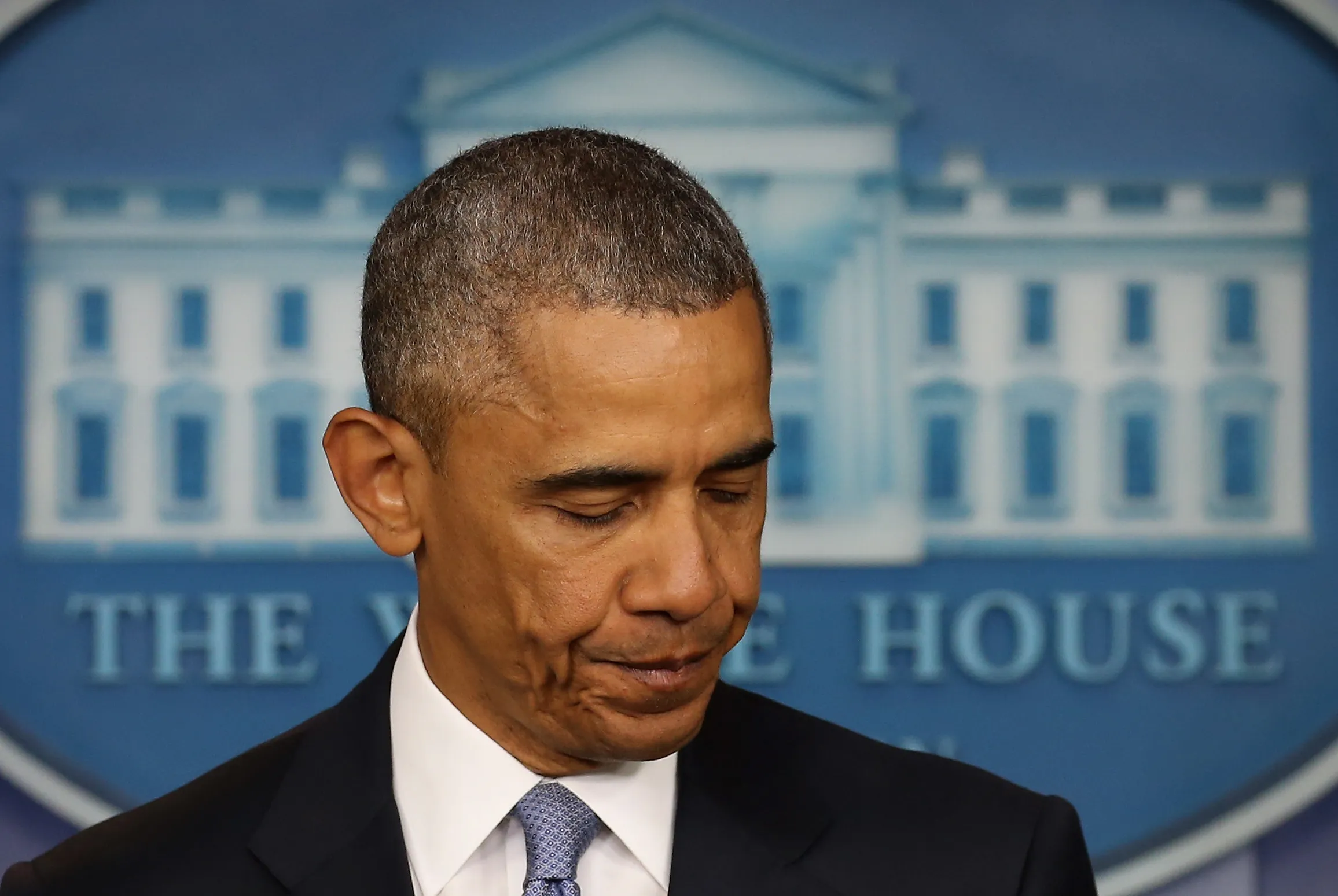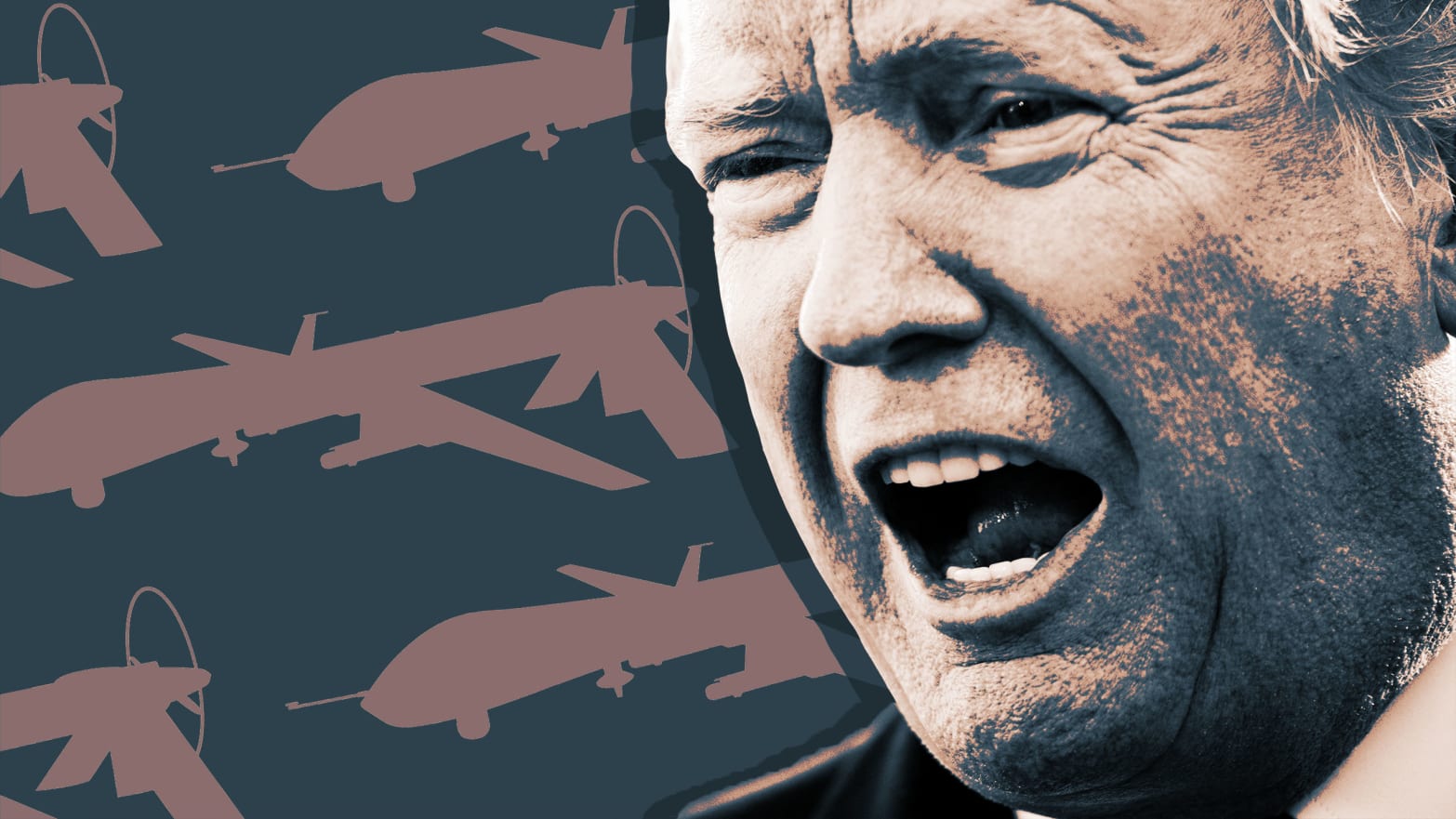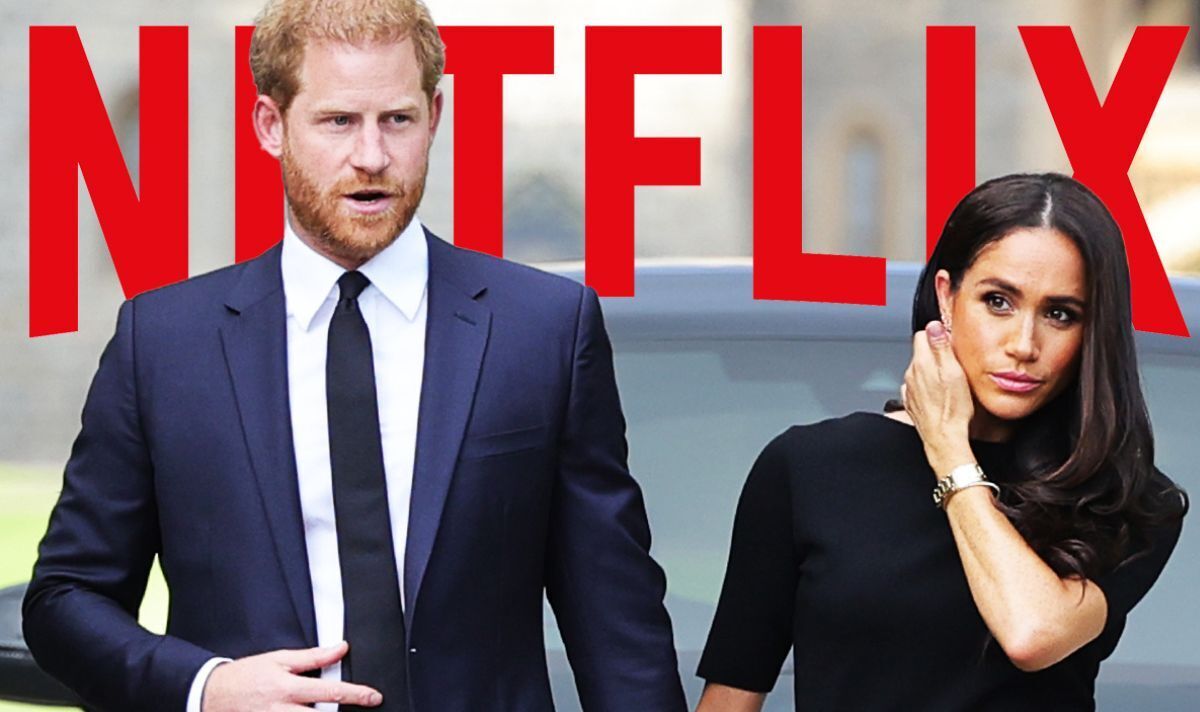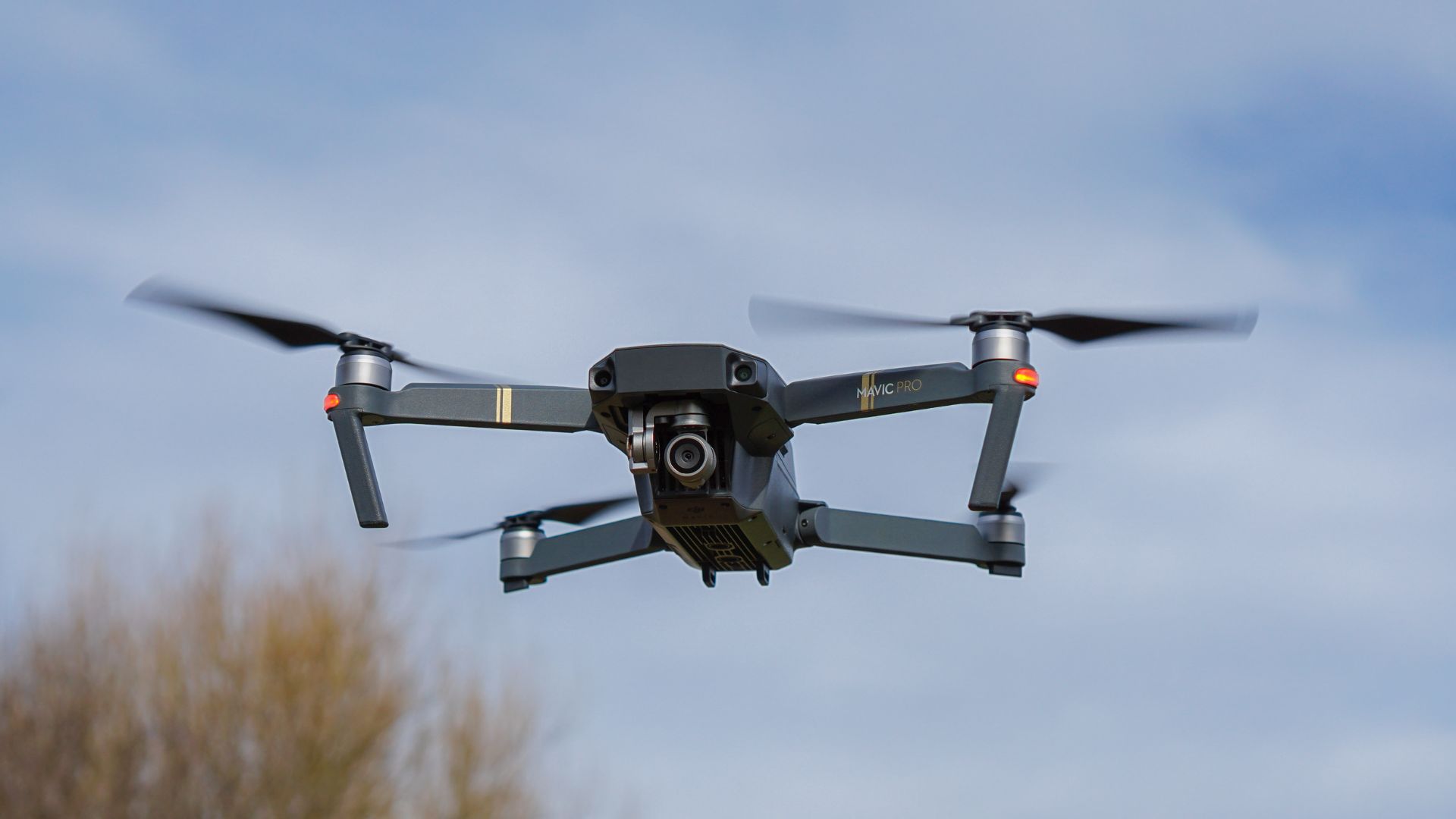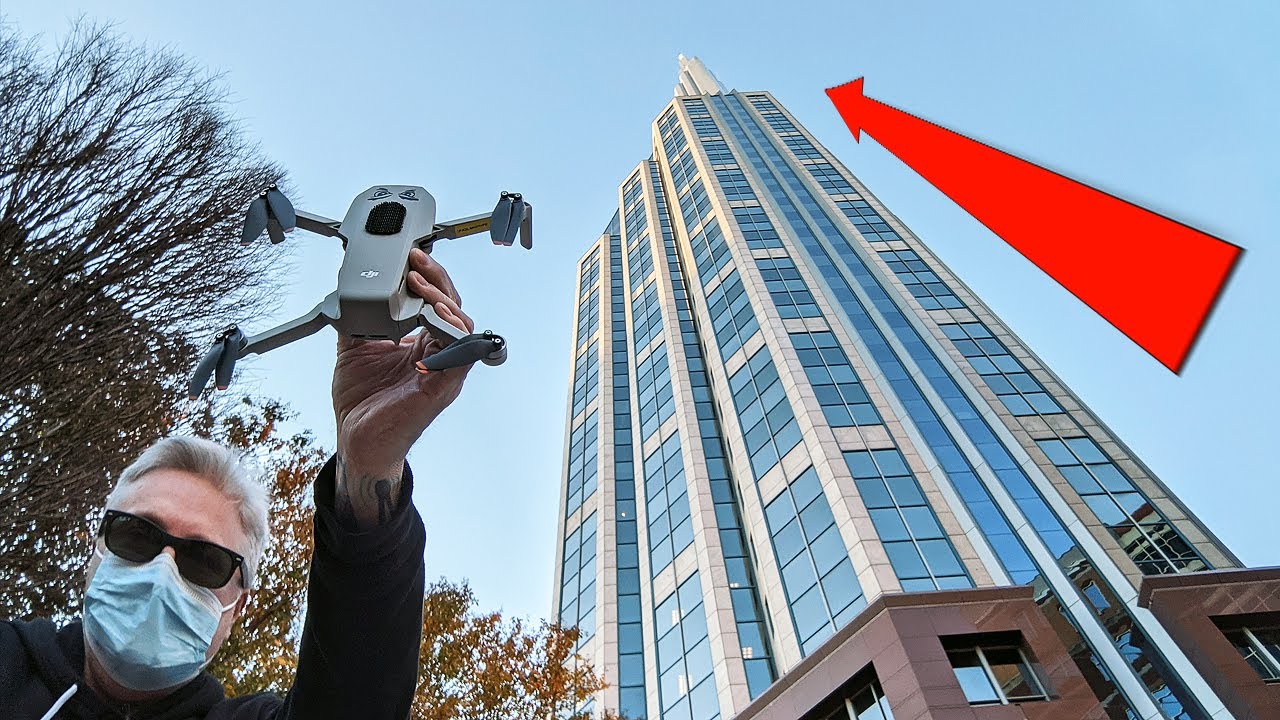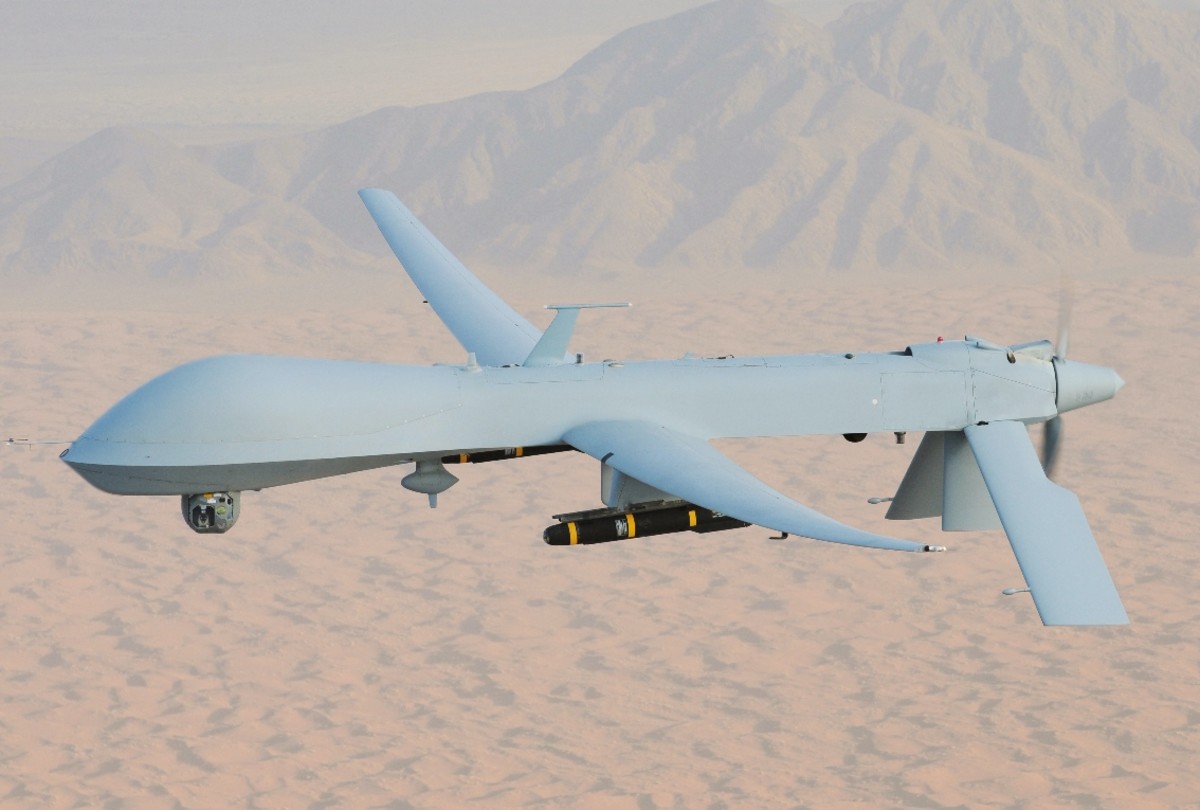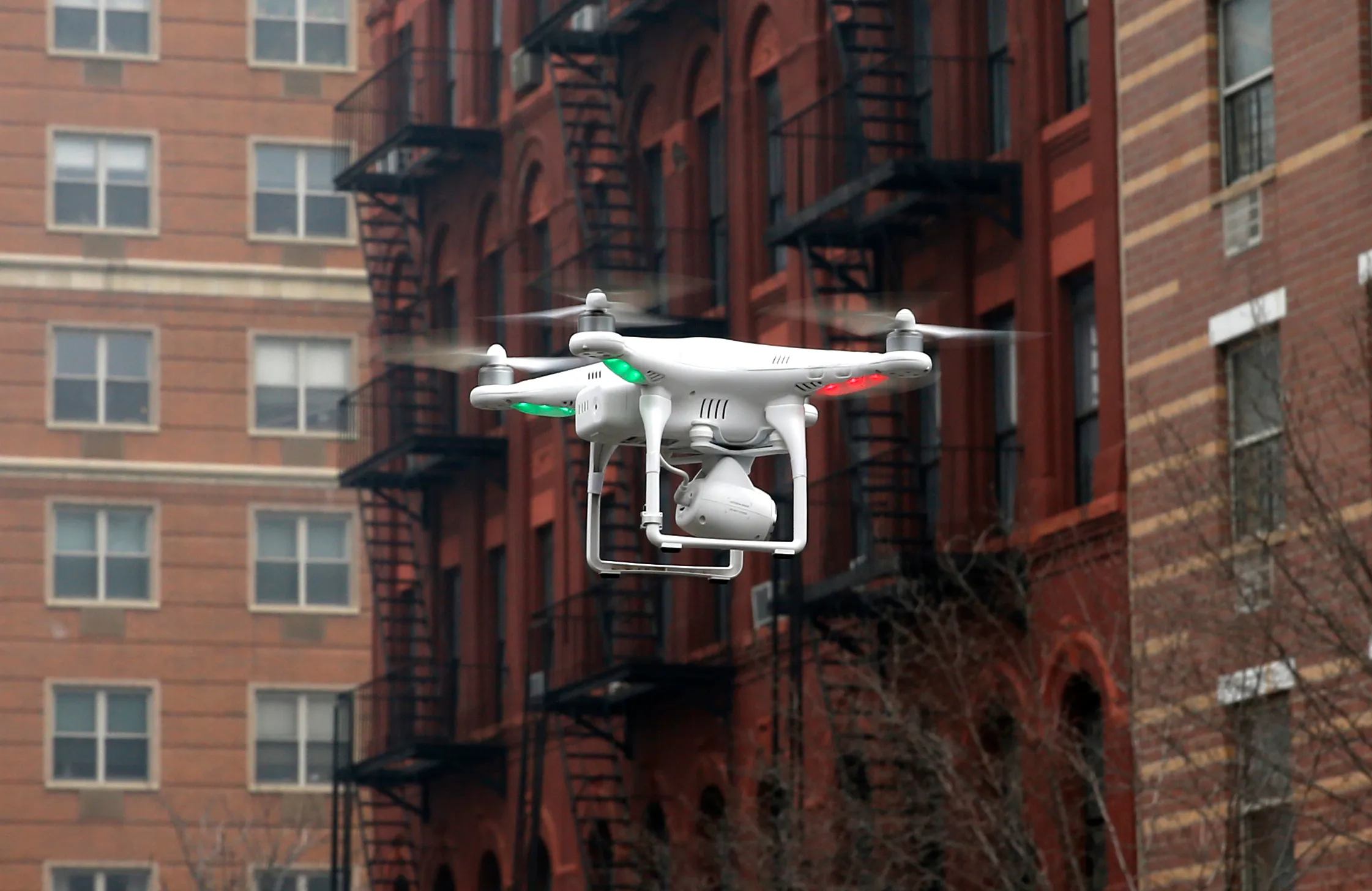Introduction
The use of drone strikes has become an integral part of modern warfare, and during his presidency, Barack Obama was no stranger to their deployment. As the 44th President of the United States, Obama faced numerous national security challenges, and drone strikes provided a way to combat and eliminate threats from terrorist organizations around the world. This article aims to provide an overview of the drone strikes ordered by Obama during his time in office.
Drone strikes, also known as unmanned aerial vehicle (UAV) strikes, involve the use of remotely operated aircraft armed with missiles to target and eliminate specific individuals or groups. This method allows for precision strikes, minimizing collateral damage and reducing the risk to American servicemen and women.
During Obama’s tenure, the use of drones expanded exponentially, transforming the landscape of modern warfare. The frequency and impact of these strikes have sparked heated debates and controversies, raising important questions about their legality, ethical implications, and long-term effectiveness.
This article will provide an overview of the different phases of drone strikes during Obama’s presidency. We will examine the early years when the use of drones was on the rise, the peak period of strikes, the subsequent decrease, and the final years of his presidency. We will also summarize the total number of drone strikes carried out during his time in office, shedding light on the scale and impact of this controversial strategy.
Furthermore, we will explore some of the main controversies surrounding Obama’s drone strike policy, including concerns over civilian casualties, the lack of transparency, and the potential for unintended consequences. By examining both the successes and criticisms, we aim to provide a comprehensive understanding of the complexities and implications of Obama’s approach to drone strikes.
Now, let’s delve into the details, starting with the early years of Obama’s presidency and the increasing utilization of drone strikes.
What are drone strikes?
Drone strikes, also known as unmanned aerial vehicle (UAV) strikes, are military operations conducted by remotely piloted aircraft armed with missiles or bombs. These aircraft, commonly referred to as drones, are controlled by human operators from a remote location, eliminating the need for a pilot on board.
The use of drones in warfare has gained significant attention and controversy over the past decade due to their unique capabilities and the ethical implications associated with their deployment. Unlike traditional manned aircraft, drones can operate for extended periods of time and carry out precision strikes with minimal risk to military personnel.
Drone strikes offer several advantages over conventional warfare methods. They provide a high degree of surveillance and reconnaissance capabilities, allowing military forces to gather critical intelligence before executing a strike. This enables the identification and targeting of specific individuals or groups involved in terrorist activities, reducing the risk of collateral damage and civilian casualties.
The use of drones has revolutionized modern warfare by offering a cost-effective and efficient solution to combatting terrorist threats. They can be rapidly deployed to remote and hostile areas, allowing for swift response times and the ability to strike targets that may otherwise be difficult to access.
However, the use of drones is not without controversy. Critics argue that the lack of human presence in the cockpit may lead to a dehumanization of warfare, potentially making it easier to engage in acts that may violate international humanitarian laws. There are also concerns over the potential for drone strikes to result in civilian casualties and the violation of national sovereignty.
The legality of drone strikes is a subject of considerable debate, with differing interpretations of international law and the authorization for the use of force. Many argue that drone strikes should only be carried out in self-defense or with the consent of the host country, while others contend that they can be justified under the principle of anticipatory self-defense or in the context of an armed conflict.
Despite the controversies surrounding drone strikes, they continue to be utilized by various nations around the world to target and eliminate high-value targets involved in terrorist activities. The use of drones has undoubtedly reshaped the landscape of modern warfare and poses important ethical, legal, and tactical considerations for military forces and policymakers.
Next, we will delve into the specific details of drone strikes under the Obama administration and analyze their frequency and impact during his presidency.
Overview of drone strikes under the Obama administration
During Barack Obama’s presidency, drone strikes became an integral part of the United States’ counterterrorism efforts. The Obama administration significantly expanded the use of drones as a tool for targeting and eliminating individuals and groups involved in terrorist activities.
Obama’s approach to drone strikes began shortly after he assumed office in 2009. The administration recognized the potential advantages of drones, such as their surveillance capabilities and ability to carry out targeted strikes with reduced risks to American troops. The use of drones aligned with Obama’s goal of shifting the focus of U.S. military operations towards targeted efforts against terrorist networks.
Under Obama’s guidance, the use of drone strikes reached unprecedented levels during his first few years in office. The administration focused on disrupting and dismantling the leadership of al-Qaeda and other extremist groups in regions like Pakistan, Afghanistan, Yemen, and Somalia. The rationale behind this strategy was to degrade the capabilities of these organizations and reduce the immediate threats they posed to U.S. national security.
However, the increase in drone strikes during this period also raised concerns and criticisms. Critics argued that the strikes often resulted in civilian casualties and violated the sovereignty of other nations. The lack of transparency surrounding the decision-making process and the potential for targeting errors further fueled the controversy surrounding drone strikes.
As Obama’s presidency progressed, there was a decline in the number of drone strikes. This decrease could be attributed to a variety of factors, including changes in foreign policy priorities and an overall effort to shift away from a heavy reliance on military force. In addition, the administration implemented stricter guidelines and protocols for carrying out drone strikes in an attempt to mitigate the potential for civilian casualties.
Despite the declining trend, drone strikes continued to be a key component of the Obama administration’s counterterrorism strategy throughout his presidency. The strikes aimed to disrupt terrorist networks, eliminate high-value targets, and prevent future attacks on U.S. soil.
In the next sections, we will explore the specific phases of drone strikes under Obama’s presidency, starting with the early years from 2009 to 2011.
The early years: 2009-2011
The early years of Barack Obama’s presidency, from 2009 to 2011, saw a significant increase in drone strikes as the administration sought to counter the growing threat posed by extremist groups such as al-Qaeda and the Taliban.
Obama inherited a complex and volatile international landscape, with ongoing military operations in Iraq and Afghanistan. As part of his broader counterterrorism strategy, the president authorized an intensified use of drone strikes to target and eliminate leaders and key operatives within these organizations.
Pakistan, specifically the Federally Administered Tribal Areas (FATA) bordering Afghanistan, became a major focus of drone strikes during this period. The region served as a safe haven for terrorist groups and posed a direct threat to U.S. national security and the stability of the Afghan government.
Through targeted strikes, the Obama administration aimed to disrupt the command structure and dismantle the operational capabilities of these groups. By eliminating high-value targets, such as senior leaders and bomb-making experts, the administration sought to weaken their ability to launch attacks and undermine their recruitment efforts.
However, the increased use of drone strikes also raised concerns regarding their legality and the potential for civilian casualties. The covert nature of the program and the limited transparency surrounding its execution sparked a global debate on the ethical implications and legality of targeted killings.
Estimates of the number of drone strikes during this period vary, but it is believed that over 200 strikes were conducted in Pakistan alone. While the majority of these strikes targeted militants, there were reports of civilian casualties, leading to increased criticism of the program’s effectiveness and impact on civilian populations.
The early years of Obama’s presidency set the stage for the future trajectory of drone strikes. The increased utilization of drones during this period laid the groundwork for subsequent phases characterized by changes in policy priorities, stricter guidelines for operation, and a focus on minimizing collateral damage.
In the following sections, we will examine the peak years of drone strikes under the Obama administration, from 2012 to 2014, and the subsequent decrease in strikes from 2015 to 2016.
The peak of drone strikes: 2012-2014
The years 2012 to 2014 marked the peak of drone strikes under the Obama administration. During this period, the United States continued its aggressive campaign against terrorist organizations, particularly in regions such as Pakistan, Yemen, and Somalia.
One of the key factors contributing to the increased number of drone strikes during these years was the expansion of covert CIA operations targeting al-Qaeda and affiliated groups. The CIA’s drone program operated under a veil of secrecy, enabling more flexibility and agility in executing targeted strikes.
Pakistan remained a primary focus, with numerous strikes carried out in the Federally Administered Tribal Areas (FATA). The rugged and inaccessible terrain of the region provided safe havens for terrorist groups and posed significant challenges for ground operations. Drones offered a way to effectively target militants in these remote areas.
In addition to Pakistan, Yemen emerged as another major theater of drone strikes during this period. The U.S. government faced an increasingly active and dangerous branch of al-Qaeda in the Arabian Peninsula (AQAP) operating in Yemen. The administration deemed it necessary to utilize drones to disrupt AQAP’s activities and prevent the group from further strengthening its capabilities.
While the use of drones continued to face criticism for potential civilian casualties and violation of national sovereignty, the Obama administration implemented stricter guidelines to minimize collateral damage. The “Principles, Standards, and Procedures” document released in 2013 outlined specific criteria and protocols for carrying out drone strikes, emphasizing the need to target individuals who posed a “continuing, imminent threat” to U.S. national security.
The peak years of drone strikes were marked by significant successes, including the elimination of high-ranking al-Qaeda operatives and disruption of terrorist activities. However, concerns regarding the transparency and oversight of the program persisted, with calls for greater accountability and disclosure of targeted killing operations.
As we move forward, we will explore the subsequent decrease in drone strikes from 2015 to 2016 and the evolving dynamics of Obama’s drone strike policy.
Decrease in drone strikes: 2015-2016
From 2015 to 2016, there was a notable decrease in the number of drone strikes ordered by the Obama administration. This shift in strategy and approach marked a departure from the peak years of drone strikes and reflected a reevaluation of counterterrorism policies.
One factor contributing to the decrease in drone strikes was a shift in foreign policy priorities. The Obama administration sought to reduce the United States’ military footprint and shift towards a more targeted and focused approach in combatting terrorism. This shift coincided with the pursuit of diplomatic solutions, particularly in regions such as Syria and Iran.
The decline in drone strikes also reflected a reassessment of the effectiveness and potential unintended consequences of this strategy. The administration acknowledged the need to address concerns regarding civilian casualties and the impact of strikes on local populations. Stricter guidelines and protocols were implemented to ensure greater precision and minimize the risk of civilian harm.
During this period, the administration focused on improving intelligence gathering capabilities and collaborating with international partners to enhance the effectiveness of counterterrorism operations. The emphasis shifted towards disrupting terrorist plots and networks through a combination of targeted strikes and coordinated efforts with local authorities.
Nevertheless, drone strikes were not completely eliminated during these years. The administration continued to target individuals who posed direct threats to U.S. national security, particularly in areas where extremist groups maintained a significant presence. Yemen remained a primary focus, with ongoing efforts to counter al-Qaeda in the Arabian Peninsula (AQAP).
The decrease in drone strikes during this period reflected a nuanced approach to counterterrorism, taking into account the potential consequences and limitations of drone warfare. The emphasis on intelligence gathering, collaboration with international partners, and efforts to address concerns over civilian casualties demonstrated a more nuanced approach to combating terrorism.
As we move forward, we will explore the final years of Obama’s presidency, from 2017 to 2018, and the overall impact and controversies surrounding drone strikes during his tenure.
Final years: 2017-2018
The final years of Barack Obama’s presidency, from 2017 to 2018, marked a continued decrease in the number of drone strikes compared to previous years. With the end of his presidency approaching, Obama’s administration focused on refining and consolidating the counterterrorism efforts that had been set in motion.
By this point, the Obama administration had recognized the limitations and potential drawbacks of relying heavily on drone strikes. The increased scrutiny and criticism surrounding the program pushed for a more balanced approach that prioritized intelligence gathering, diplomacy, and cooperation with partner nations.
The shift in counterterrorism strategy during these years aimed to mitigate the risks of civilian casualties and collateral damage. Stricter rules of engagement were put in place, requiring a higher level of confidence in target identification and minimizing the potential for harm to non-combatants. This emphasis on precision strikes aligned with a broader effort to strengthen ethical guidelines and ensure accountability.
The decline in drone strikes during this period also reflected the changing dynamics of global security threats. The rise of new and emerging challenges, such as the emergence of ISIS, required a recalibration of priorities and resources. The focus shifted towards combating the expanding influence of ISIS and addressing the volatile situation in Syria.
While the use of drones remained a component of the counterterrorism arsenal, their deployment became more strategic and focused on specific operations rather than widespread campaigns. The administration sought to strike a balance between maintaining pressure on extremist groups and addressing concerns over the legality and effectiveness of drone strikes.
As Obama’s presidency came to a close in 2017, the use of drones and the broader counterterrorism efforts faced ongoing scrutiny. The transition to a new administration introduced uncertainties regarding the future direction of drone strike policies, with debates surrounding the efficacy, transparency, and legality of targeted killings.
In the next section, we will summarize the overall scope and impact of drone strikes during Barack Obama’s presidency and delve into the controversies that surrounded his approach to this controversial strategy.
Summary of drone strikes during Obama’s presidency
During Barack Obama’s presidency, from 2009 to 2016, the United States significantly increased the use of drone strikes as part of its counterterrorism efforts. These strikes targeted individuals and groups affiliated with al-Qaeda and other extremist organizations, with the primary aim of disrupting their operations and reducing the immediate threats to U.S. national security.
The total number of drone strikes carried out during Obama’s presidency remains a subject of debate, as the exact figures are classified. However, estimates suggest that there were hundreds of strikes conducted in countries such as Pakistan, Yemen, Somalia, and Libya.
The early years of Obama’s presidency, from 2009 to 2011, witnessed a surge in drone strikes as the administration sought to counter the growing threat posed by extremist groups. Pakistan’s Federally Administered Tribal Areas (FATA) became a major focus, along with Yemen and Somalia.
The peak years of drone strikes occurred from 2012 to 2014, with an intensified campaign against terrorist networks. Pakistan, Yemen, and Somalia continued to be primary theaters of operation. The use of drones during this period faced significant criticism and controversy over concerns of civilian casualties and violations of national sovereignty.
From 2015 to 2016, there was a decrease in the number of drone strikes as the Obama administration shifted its foreign policy focus and pursued a more targeted approach. Efforts were made to address concerns regarding collateral damage and improve transparency surrounding the decision-making process.
In the final years of Obama’s presidency, from 2017 to 2018, the use of drone strikes continued to decline. The administration aimed to strike a balance between maintaining pressure on extremist groups and addressing ethical concerns surrounding the program.
The overall impact of Obama’s drone strike policy is complex and subject to debate. While the strikes successfully eliminated high-value targets and disrupted terrorist networks, they also faced criticism for civilian casualties and violated sovereignty.
The controversy surrounding drone strikes during Obama’s presidency raised important questions about the legal, ethical, and strategic implications of targeted killings. The use of drones in warfare continues to be a topic of discussion and scrutiny, as subsequent administrations grapple with the challenges and potential consequences of this controversial strategy.
In the next section, we will explore the controversies surrounding Obama’s drone strike policy and the ongoing debates surrounding the use of drones in modern warfare.
Controversies surrounding Obama’s drone strike policy
Barack Obama’s drone strike policy faced significant controversies and debates throughout his presidency. These controversies revolved around various aspects of the program, including legal justifications, transparency, civilian casualties, and the implications for international relations.
One of the key controversies was the legal basis for carrying out drone strikes. Critics argued that the strikes often violated international law, particularly in instances where they were conducted without the consent of the host country or in countries where the United States was not engaged in an armed conflict. This raised concerns about the erosion of sovereignty and the potential for setting dangerous precedents in the use of force.
Transparency surrounding the decision-making process and the lack of public disclosure of the criteria for selecting targets was another point of contention. The covert nature of the program meant that many aspects of drone strikes were shrouded in secrecy, making it difficult to assess the legality and legitimacy of specific strikes.
Perhaps the most significant controversy surrounding drone strikes was the issue of civilian casualties. Despite efforts to minimize collateral damage, reports of civilian deaths and injuries emerged, raising concerns over the ethical implications and the potential for radicalizing affected populations. The difficulty in accurately assessing and verifying the number of civilian casualties further intensified the debate.
Moreover, the reliance on signature strikes, which targeted individuals based on patterns of behavior rather than specific identification, added to the controversy. Critics argued that this practice increased the risk of mistaken targeting and further blurred the line between combatants and non-combatants.
The impact on international relations was another aspect of the controversy surrounding drone strikes. The strikes conducted in countries such as Pakistan and Yemen without the explicit consent of the respective governments strained diplomatic ties and fueled anti-American sentiments. The lack of transparency and accountability further complicated efforts to rebuild trust with international partners.
The controversies surrounding Obama’s drone strike policy highlighted the complexities and ethical dilemmas associated with modern warfare. The use of drones as a tool for targeted killings raised important questions about the legal and moral justifications for such actions, as well as the potential long-term consequences for global security and stability.
In the next section, we will conclude our exploration of Obama’s drone strike policy and its impact on modern warfare and the ongoing debates surrounding the use of drones in counterterrorism operations.
Conclusion
The use of drone strikes during Barack Obama’s presidency was a defining aspect of his counterterrorism strategy. Over the course of his eight years in office, the United States significantly increased the frequency and impact of drone strikes, targeting individuals and groups involved in terrorist activities.
The use of drones offered unique advantages such as precision strikes and reduced risks to American servicemen and women. However, the policy was not without controversies and debates.
The drone strike program under Obama faced criticism and scrutiny on multiple fronts. Concerns were raised about the legality of the strikes, particularly regarding violations of national sovereignty and international human rights laws. The lack of transparency surrounding the decision-making process further fueled concerns about accountability and adherence to ethical standards.
The issue of civilian casualties was perhaps the most contentious aspect of the drone strike policy. Despite efforts to minimize collateral damage, reports of civilian deaths and injuries stirred public outcry and debates on the moral implications of targeted killings. The difficulty of accurate casualty assessments added to the complexity of the issue.
The controversies surrounding Obama’s drone strike policy raised important questions about the use of drones in modern warfare. The legal and ethical considerations, as well as the impact on international relations, continue to shape the ongoing debates surrounding targeted killings and the use of force.
It is crucial for policymakers and military leaders to carefully consider the implications of drone strikes, balancing the need for national security with the protection of civilian lives, respect for sovereignty, and adherence to international humanitarian laws.
As subsequent administrations inherit and adapt the use of drones for counterterrorism operations, the discussions and debates surrounding this controversial strategy are poised to persist. The advancements in technology, evolving international norms, and changing security landscapes will all influence the future trajectory of drone warfare.
Ultimately, the effective and ethical utilization of drones in warfare requires ongoing scrutiny, transparency, and accountability. It is essential to strike a delicate balance between combatting terrorism, protecting innocent lives, upholding international legal frameworks, and respecting the sovereignty of nations.







